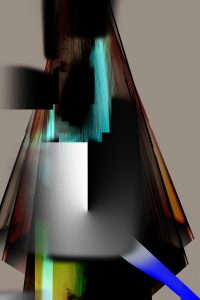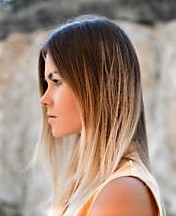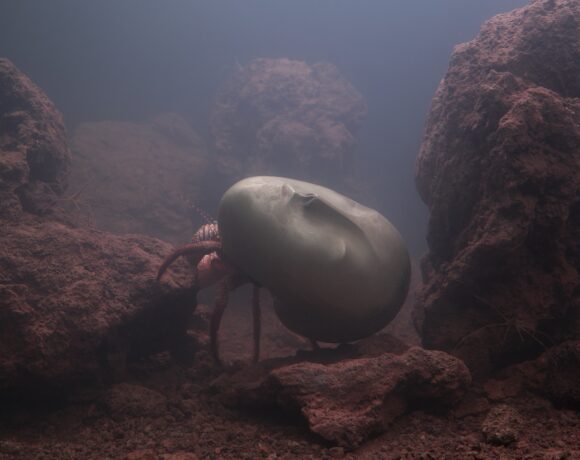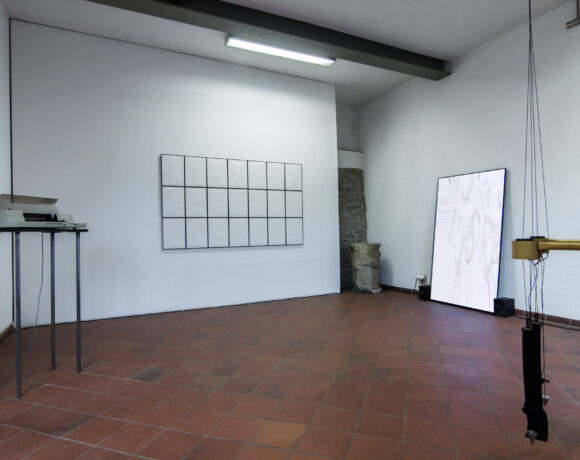In recent years, the ubiquity of digital photography and the spread of new media have radically changed the status of the image, potentially infinitely expanding its possibilities for metamorphosis and self-generation. If on the one hand the explosion of the virtual seems to have loosened the relationship of the individual with material reality by projecting him into an ambiguous dimension in which everything and nothing seems possible, on the other hand the works created with these tools, while claiming belonging to their specific imagery, appear animated by a subtle competition with tangible experience, which they undertake to reproduce and “increase” with sophisticated techniques of mimesis.
These apparent contradictions on the level of logic, and the lability of the boundaries of perceptions related to them, demonstrate how the epistemological contaminations triggered by the digital revolution that we now realize are only the first emergence of a realm still to be explored.
Marco Jacconi‘s work is paradigmatic with respect to these reflections: he is a multimedia artist based in Zurich internationally known for his hypnotic abstract compositions that visualize mysterious mental landscapes in which pure shapes and colors seem to expand into the void, incorporating unrecognizable fragments of reality adrift. To deepen his poetics, we had the pleasure of asking him some questions.
Camilla Pappagallo: You started your career as a creative director in the field of digital graphics and then you dedicated yourself completely to art. What did this experience teach you and what reasons led you to become an artist?
Marco Jacconi: The technical skills of mastering the medium were certainly influenced and enriched by my professional experience. In terms of content and concept they are two separate worlds which, in my case, have nothing in common with each other. In my artistic work I have an absolutely free, personal, rather sensual, and mystical approach. Inspired by Giorgio de Chirico, Salvador Dalì and Joan Miró, I started creating and exhibiting art in my 20s. At that time I painted large format surreal acrylic paintings. In the wake of an emerging techno movement, my business partner Marco Simonetti at the time and I founded the Walhalla design agency in the 90s, where we mainly dealt with progressive graphic design and digital art in the subcultural area. Our work from that time was exhibited alongside works by Ugo Rondinone and Sylvie Fleury in the Kunsthalle Bern. Although I’ve been doing art for a long time, the death of a family member a few years ago certainly had a major impact on my work and made me aware not only of the fragility of life but of my own as well. The subsequent grief work and inner exploration ultimately led me to more presence, awareness and creative power. This brought me to my current “Shapes of the deep” project.
Your abstract compositions are based on a complex process of superimposition and interpenetration of shapes, surfaces and levels, through which what I would like to define an existential search for essentiality is carried on. Would you like to tell us in more detail (obviously without revealing your technical secrets) the genesis of your works?
The “Shapes of the deep” project is about a search for an optical language that allows to capture the spheres beyond the world of appearances. Many contrasts and contradictions come into play in my works. The dramatic and harmonious. The light and the darkness. The subtle and the brute. One cannot exist without the other. There is something mysterious in this polarity, once one has found the point to wholeness. I emphasize these opposites through color and shape contrasts, sharpness contrasts and resting points as well as a strong use of light and shadow. These contrasts ultimately create a tension difference that radiates energy and liveliness. In the current project “Shapes of the deep” I am therefore focused on the exploration of wholeness.
I am very fascinated by the spatiality of your images, which seem to reject the traditional concept of depth understood as three-dimensionality to project the gaze into a sort of “multidimensionality” impossible to measure and circumscribe, in which the absence of thickness, paradoxically, seems lead to an exponential proliferation of levels and dimensions. What would you like to tell us about it?
The surfaces and forms in my work overlap and penetrate each other until depths arise. It‘s these depths that I‘m trying to explore. I do not consciously control this intuitive creative process, but rather accompany it. So, it is simultaneously an active and passive work. There is no beginning and no end in my pictures. No before and no after. Everything is interconnected and happens in a very dynamic and playful way of working. I get my inspiration from the work process itself. One shape leads me to the next, with the aim to expand my work into the void, which ultimately lead to peace and presence.
Another aspect that strikes me is the particular quality of the light in your works, an endogenous and mental light that seems to investigate the spiritual essence of the chromatic spectrum, but also seeks with an almost theatrical approach the event generated by the interaction between different luminosity. What is your relationship with light?
The lighting is a central criterion in my “Shapes of the Deep” project. I use strong tonal contrasts between light and dark to model three-dimensional shapes and to achieve a dramatic effect. The light penetrates a room of deep darkness in sharp illumination. Abstract landscapes and shadow worlds emerge from surfaces and radiate something mysterious, dramatic almost sacred. This is how I can experience and express contemplation and sublime moments.
One of your most recent and important projects is “Shapes of the Deep”, a digital series inspired by the intention of “making the invisible visible”. Would you like to reveal something more about this project?
In this project it is my goal to penetrate into spiritual spheres and to make the mysterious invisible visible. One could imagine my workstyle as a process of swimming and diving: if the swimmer stays on the surface, he thinks and acts consciously. But the big secret is beneath the surface. Whenever the swimmer dives down and stayed there for a long time he could bring something special to light. My artistic process is an interplay between diving into the sea of the unconscious and seeing and evaluating through the conscious on the surfaces. My individual unconscious is rooted in the collective unconscious and serves as a vast resource of personal and human experience anchored in symbols and myths. I want to shape and make visible what is pressing out of my soul. My creative process is about penetrating from the surface to explore the essence and truth of things. The work goes through countless metamorphoses on this visual adventure journey until it finds its final form. Each image is visualized energy: it is as if something from the inside would penetrate to the outside – as if the surfaces were under pressure. As if there was something to discover inside. Digital Art allows me to work dynamically, flexibly and exploratively. The countless options and possible combinations of this medium suit my free and intuitive way of working very well.
I would conclude our conversation by talking about your NFTs: beyond the fact of integrating a certificate of authenticity and ownership in the file that constitutes the work, what do you think are the most specifically creative horizons of this new kind of art?
NFTs are designed to give you something that can’t be copied: ownership of the work (though the artist can still retain the copyright and reproduction rights, just like with physical artwork). To put it in terms of physical art collecting: anyone can buy a Monet print, but only one person can own the original. But NFT are more than just kinship. They are changing lives — and perhaps also changing the art world. The NFT community is an incubator for innovation — in art, technology, community-building, and philanthropy. Over time, NFTs have fostered a massive, vibrant community that is about far more than money or art. The space has become a place where lives can and do change and where people — more often than not — seem to want to look out for each other. The list of new possibilities and unanswered problems that NFTs offer is long. It seems that NFTs will not really disappear. However, it remains to be seen to what extent the phenomenon will establish itself.
Info:
 Marco Jacconi’s portrait, ph Tobias Stahel, courtesy the artist
Marco Jacconi’s portrait, ph Tobias Stahel, courtesy the artist
 Marco Jacconi, Catharsis, digital painting, 2020, courtesy the artist
Marco Jacconi, Catharsis, digital painting, 2020, courtesy the artist
 Marco Jacconi, Mosca bianca (White fly), digital painting, 2020, courtesy the artist
Marco Jacconi, Mosca bianca (White fly), digital painting, 2020, courtesy the artist
 Marco Jacconi, L’isola che non c’è (Neverland), digital painting, 2021, courtesy the artist
Marco Jacconi, L’isola che non c’è (Neverland), digital painting, 2021, courtesy the artist

Graduated in contemporary art, has been working in collaboration with various contemporary art galleries, private foundations, art centers in Italy and abroad.






NO COMMENT